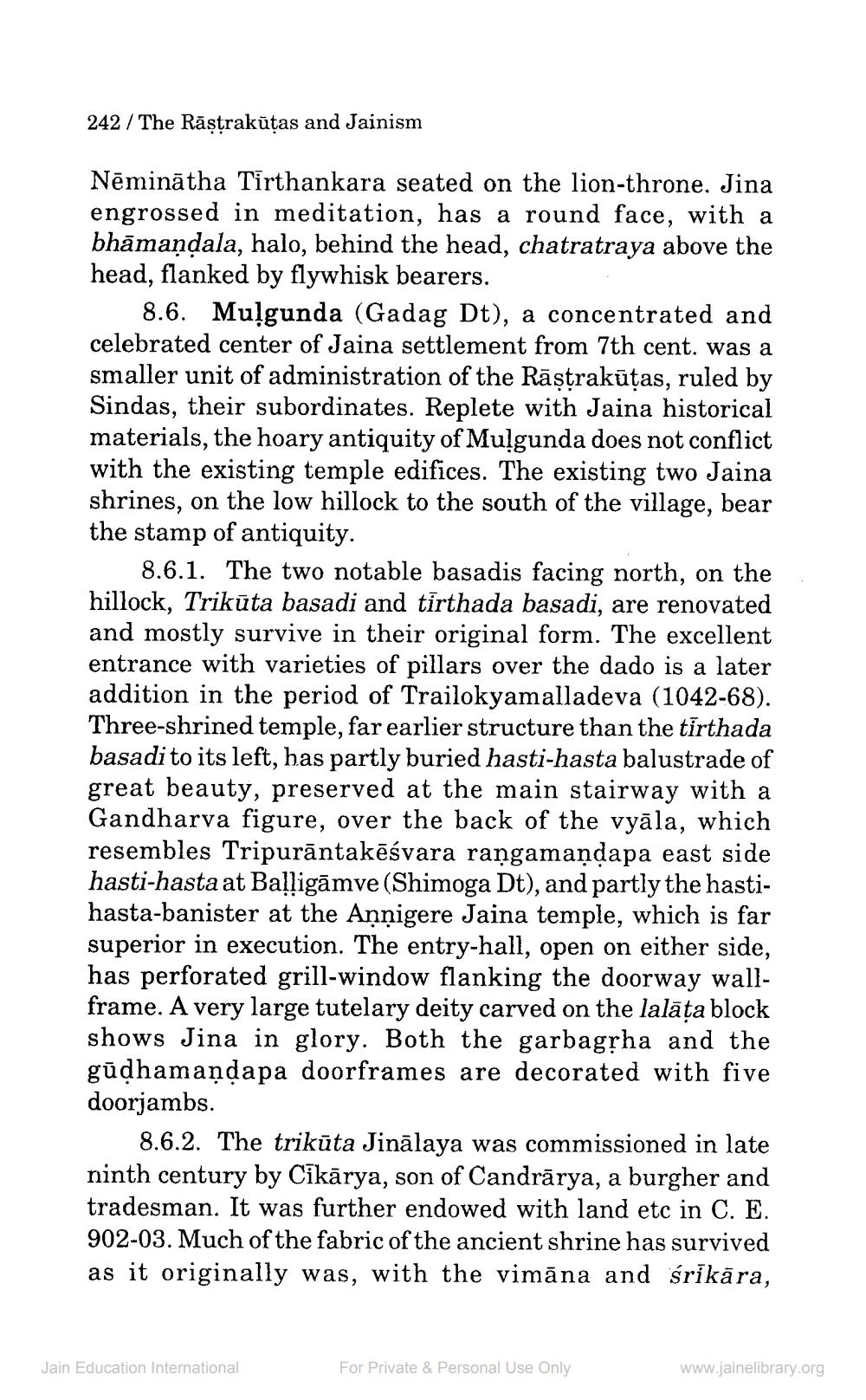________________
242 / The Rāstrakūtas and Jainism
Nēminātha Tirthankara seated on the lion-throne. Jina engrossed in meditation, has a round face, with a bhāmandala, halo, behind the head, chatratraya above the head, flanked by flywhisk bearers.
8.6. Muļgunda (Gadag Dt), a concentrated and celebrated center of Jaina settlement from 7th cent. was a smaller unit of administration of the Rāştrakūtas, ruled by Sindas, their subordinates. Replete with Jaina historical materials, the hoary antiquity of Mulgunda does not conflict with the existing temple edifices. The existing two Jaina shrines, on the low hillock to the south of the village, bear the stamp of antiquity.
8.6.1. The two notable basadis facing north, on the hillock, Trikūta basadi and tirthada basadi, are renovated and mostly survive in their original form. The excellent entrance with varieties of pillars over the dado is a later addition in the period of Trailokyamalladeva (1042-68). Three-shrined temple, far earlier structure than the tirthada basadito its left, has partly buried hasti-hasta balustrade of great beauty, preserved at the main stairway with a Gandharva figure, over the back of the vyāla, which resembles Tripurāntakēśvara rangamaņdapa east side hasti-hasta at Balligāmve (Shimoga Dt), and partly the hastihasta-banister at the Aạnigere Jaina temple, which is far superior in execution. The entry-hall, open on either side, has perforated grill-window flanking the doorway wallframe. A very large tutelary deity carved on the lalāța block shows Jina in glory. Both the garbagrha and the gūdhamandapa doorframes are decorated with five doorjambs.
8.6.2. The trikūta Jinālaya was commissioned in late ninth century by Cikārya, son of Candrārya, a burgher and tradesman. It was further endowed with land etc in C. E. 902-03. Much of the fabric of the ancient shrine has survived as it originally was, with the vimāna and srikāra,
Jain Education International
For Private & Personal Use Only
www.jainelibrary.org




